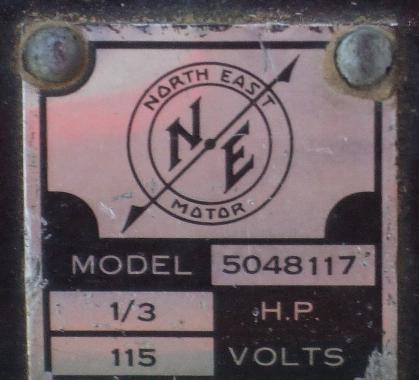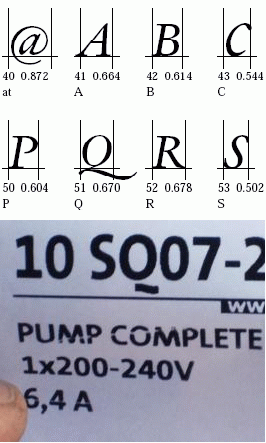|
These changes only affect comments. URLs for the blog entries remain unchanged. One day in 1914, P. C. Mahalanobis read a puzzle from a magazine to Ramanujan, who immediately responded not just with the desired answer but with the solution to a more general problem. Mahalanobis was impressed, and asked Ramanujan how he did it. His response was that he immediately realized the answer would be a continued fraction, asked himself "which continued fraction?", and the answer just came to his mind. Not many people can do that sort of thing. The problem in question: A street has houses numbered 1 through m, consecutively. The sum of all numbers below that of a particular house (call its number n) equals the sum of all the numbers above it. If the street has between 50 and 500 houses, what is n? Stated more formally: find positive integers n and m such that 1 + 2 + ... + n-1 = n+1 + n+2 + ... + m. That simplifies to 2n² = m² + m. Ramanujan's continued fraction shows how to calculate all possible integer values of n. (There's also a closed-form expression for m in terms of n, which I suspect Ramanujan would've happily provided upon request.) The solution that satisfies the original puzzle's size constraint is n=204, m=288. I'd read about this story years ago, but hadn't looked into the details of the solution. Sroyon's recent visit to Ramanujan's house got me interested again, and I found a paper on the web that explains how to solve the problem and speculates on which particular continued fraction it was that Ramanujan rattled off. I've been working on a presentation of the solution that would be accessible to a lay audience, and I'll be posting it here soon. One day, when I was little, I discovered I could hammer a screwdriver into the asphalt of the street in front of our house. This took me by surprise and made me revise my concept of the street as being hard, impervious, and permanent. The screwdriver in question had a wood handle which split from being hammered on. My father was not pleased. He glued the piece that split off back on, and directed me to not hit screwdrivers with hammers and to not pound things into the street in general. I remember taking physics in high school and asking the teacher whether photons were waves or particles or what. He said that wave and particle are only models. That's my earliest memory of seeing how concepts are imperfect, how reality defies modeling. Some of my favorite memories of being young are of shedding misconceptions. 
Where Rubinstein is pianist Arthur Rubinstein. Happy nineteenth, everyone. Electrical devices in the mid-20th century were technically simple by today's standards, but they had style. Gone are the days of names like Cosmic Condenser Co., slogans like "don't be vague--ask for Sprague", and cute puns like koolohm (coulomb). 

I love the logo on this motor: the shear transform applied to the N and E, the rotational symmetry of the arrow, and the industrial-looking typeface with the triangle-y letter O. Good stuff. 
Teenaged boys were created to mumble darkly whilst doing yard work to justify their existence on earth and their room and board.This morning, I was a witness to a conversation I could not join (for a reason I will withhold to create suspense). Person A explained that the icky smoke in the valley today was from a prescribed burn near Yosemite that got out of control. Person B asked why they don't just cut down and shred trees instead of burning them. A asked what you'd do with the mulch. B said "truck it away." I had the impression A realized just how impractical it would be to shred and truck away acres and acres of vegetation but was content to not make a point of it. I had no choice but to quietly listen because this was a dentist's office, and A and B were sticking various instruments in my mouth. Last night: mid-dream, I realized I was dreaming, saw that as an opportunity to take control of what I was seeing, and found that I couldn't. The circumstances and characters in the dream remained outside of my conscious control--which gave me pause. I thought, this reminds me of what it's like to be awake, where control--even of ourselves--is not a given. Nothing new, but it was fun to be musing about such things in the context of a dream. Keith Emerson was in the dream. At one point his right hand was playing keyboard while his left hand wrote with pen and paper. Nice exercise in divided attention, that. A less-demanding exercise in developing attention: vary the tempo of anything you habitually do at a certain pace. |
 I was startled to find this lizard lounging in my living room Thursday night.
At about 25cm long, I think he's the most imposing-looking
uninvited guest I've had so far.
I was startled to find this lizard lounging in my living room Thursday night.
At about 25cm long, I think he's the most imposing-looking
uninvited guest I've had so far.
 In many typefaces, Q is the only uppercase letter with a descender.
Q benefits from the extra room; a Q that's constrained to live above
the baseline (like, for example, the Q on my car's license plate)
often looks cramped.
In many typefaces, Q is the only uppercase letter with a descender.
Q benefits from the extra room; a Q that's constrained to live above
the baseline (like, for example, the Q on my car's license plate)
often looks cramped.